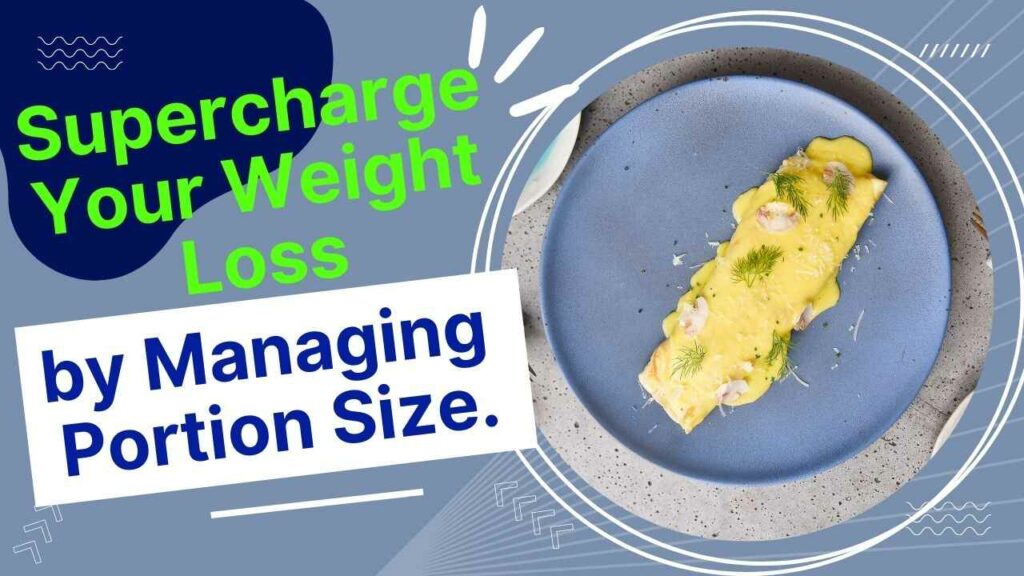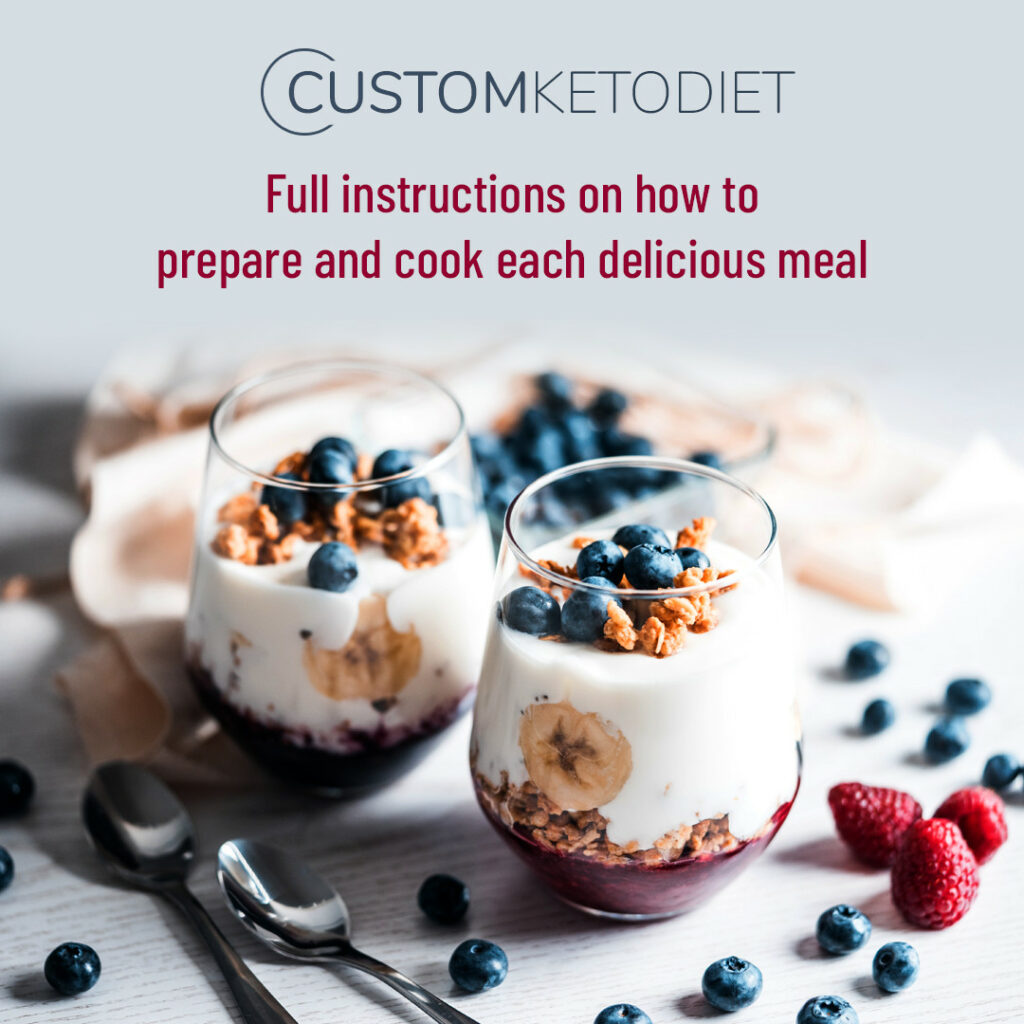Supercharge Your Weight Loss by Managing Portion Size.

Disclosure: You should be aware that some of the links in this article may be affiliate links, which means that if you decide to buy something through one of these links, I may receive a commission, which does not increase the cost to you. This site does not provide financial or medical advice and is just for entertainment purposes. In our privacy policy, you may see our affiliate disclosure.
Supercharge your weight loss by managing portion size. When you eat too much, your body stores the excess energy as fat. By controlling the amount of food you eat, you can lose weight and keep it off. Start by reducing the size of your portions and eating only when you are hungry. Be sure to choose healthy foods that are low in calories and high in nutrients.
By reducing the amount of food you consume, you can create a caloric deficit that will help you lose weight. Additionally, eating smaller portions can help you eat more slowly and mindfully, which can lead to decreased hunger and increased weight loss.
Table of Contents

FREE
Weight Loss eBook
Discover How To Get Rid of Stubborn Belly Fat the Easy Way and Forever.
What is Portion Size?
Serving size and portion size are two words that are occasionally used interchangeably. It is essential to comprehend the differences between the two clearly. Serving sizes are stated on the Nutrition Facts label, and the amounts listed for each serving are what are utilized to calculate the nutrient information that is displayed.
The serving sizes listed on the packaging of food items are not meant to be used as a reference for how much food or liquid should be ingested. The amount of food or drink that people normally take in a single sitting is based in part on data from the National Health and Nutrition Examination Survey (NHANES), a survey that evaluates how much food and nutrition are consumed in the United States.
However, unlike serving sizes, which are listed on the Nutrition Facts label, portion sizes are not decided and regulated by the government. Additionally, portion sizes are not uniform. We refer to it as the portion size when we are referring to the quantity of food or drink that is served to us or the quantity that we decide to put on our plates and glasses. Nutrition experts usually advise on the significance of right-sizing the portions that we consume because the recommended serving size for one person may differ from the serving size mentioned on the Nutrition Facts label. This is because appropriate portion amounts might vary depending on the individual.

Healthy portion sizes might be a challenge to understand.
Healthy portion sizes might be a challenge to understand because they vary depending on the person’s body size and activity level. A good way to start figuring out what a healthy portion size is for you is to use the My Plate guide from the USDA.
This guide recommends dividing your plate into four sections, with one section being for protein, one for grains, one for vegetables, and one for fruits.
When it comes to understanding portion size, there are a few key things to keep in mind. First, remember that a serving is not the same thing as a portion. A serving is the amount of food that is recommended by nutrition experts, while a portion can be any size you choose. Second, be aware of the difference between “recommended” and “ideal.”
When it comes to recommended versus ideal portion sizes, it is important to be aware of the difference. A recommended portion size is one that is typically suggested by experts or health organizations, while an ideal portion size is what would be best for an individual’s own health and weight goals.
Recommended portion sizes may not be ideal for everyone, and vice versa, so it is important to pay attention to what works best for you.

Serving and eating smaller portions might be a challenge.
One potential challenge when serving and eating smaller portions might be that people may feel like they are not getting enough food. This could lead to them eating more than they intended, defeating the purpose of portion control.
Another challenge might be that people become bored with the smaller portions and stop eating altogether. It is important to find a balance between eating enough to feel satisfied, but not so much that weight gain occurs.
One challenge that might be faced when trying to eat smaller portions is that it can be difficult to resist temptation. When food is placed in front of us, it can be hard not to overeat, especially if the food is something that we enjoy. Another challenge might be getting used to eating smaller amounts. Our stomachs are used to being filled up and when we start to eat less, we might feel hungry more often.

Common Methods of Portion Control
There are a variety of approaches to portion control that people use in order to manage their weight and health. Some people use portion-size plates or measuring cups to make sure they are eating the right amount, while others only eat until they are full. Another approach is to eat only healthy foods and avoid processed foods, which often have high-calorie counts.
There are a number of common methods of portion control, including but not limited to: counting calories, measuring portions with utensils or common kitchen items, using food scales, and following food labels.
While there is no “one size fits all” solution, many people find that a combination of these methods works best for them. For example, someone might count calories one day and use a food scale to measure their portions the next. Experiment until you find what works best for you.
When an individual consumes food in excess of their energy needs, they reach a state of satiety, or fullness. Satiety signals the body to stop eating, as it has received enough nutrients to meet its needs.
The sensation of satiety is regulated by various hormones and neurotransmitters, including leptin and ghrelin. Leptin is produced by adipose tissue (fat cells) and signals the brain when the body has had enough food.

Portion size by age
There is a general trend that as people age, they tend to eat less. One study on portion size by age found that adults eat an average of 2.5 bites of food, while children eat an average of 9.6 bites of food.
The study also found that the older the participant, the smaller the average bite size. This may be because as people age, their taste buds change and they are less likely to enjoy sweet or fatty foods.
In recent years, there has been a great deal of research on the effects of portion size on weight management, especially among older adults. Some studies have found that when given larger portions, older adults are more likely to overeat and gain weight. Others have found that when offered smaller portions, older adults are more likely to eat less and lose weight.


FREE
Weight Loss eBook
Discover How To Get Rid of Stubborn Belly Fat the Easy Way and Forever.
What should the portion size be?
When it comes to portion size, experts recommend aiming for about the size of your palm for protein, a cupped hand for grains and starchy vegetables, and half a fist for fruits.
However, it’s important to listen to your own body and eat until you’re comfortably full rather than counting grams or measuring cups.
This means that you should not deprive yourself of food and then overindulge later on; rather, you should eat a moderate amount of healthy food throughout the day. This approach will allow your body to function at its best and will help you maintain a healthy weight.
Additionally, try to make half your plate fruit and vegetables, switch to healthier cooking oils like olive oil, and cook with spices instead of salt to keep things flavorful.
Portion size containers.
When a person is eating, it is important to consider the size of the portion that is being consumed. This is especially true for people who are trying to manage their weight. One way to help with portion control is to use smaller containers when serving food.
This helps to ensure that people are not over-indulging, and it also encourages them to eat slower, which can give the body time to register that it is full.
Small, medium, and large are not the only size options available when it comes to food containers. Portion-size containers are also an option for those looking to control their caloric intake. These containers usually come in a variety of different sizes, so that the user can choose the right amount of food for them. This is a great option for those who are trying to lose weight, as it allows them to easily keep track of how much they are eating.

Summary
Manage your portion sizes to get the most out of your weight loss efforts. When you overeat, your body turns the extra calories you consume into fat. In order to lose weight and keep it off, it’s important to monitor your food intake. Reduce the size of your meals and only eat when you’re hungry, to begin with. Select low-calorie, high-nutrient foods whenever possible.
You can lose weight by limiting the amount of food you eat, which creates a calorie deficit. Smaller amounts encourage you to eat more slowly and carefully, which can help you lose weight by decreasing your appetite and increasing your metabolic rate.

FREE
Weight Loss eBook
Discover How To Get Rid of Stubborn Belly Fat the Easy Way and Forever.
Disclosure: You should be aware that some of the links in this article may be affiliate links, which means that if you decide to buy something through one of these links, I may receive a commission, which does not increase the cost to you. This site does not provide financial or medical advice and is just for entertainment purposes. In our privacy policy, you may see our affiliate disclosure..






